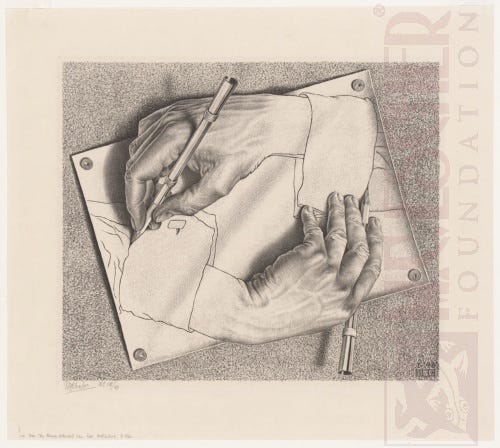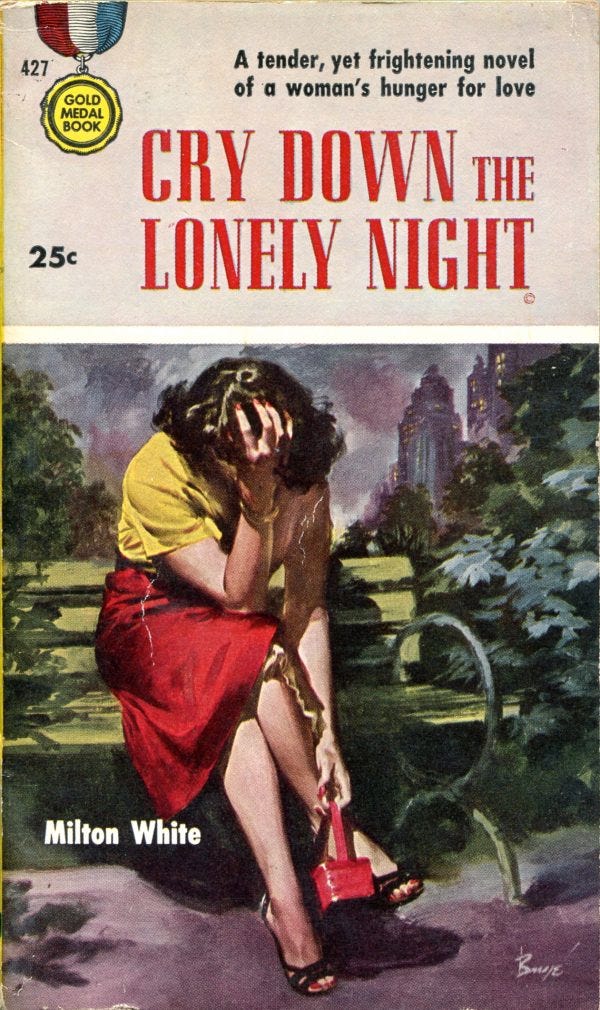Personas, Façades, Masks, “Others”
In your ad you said “lovely young woman.” Or did you write “lonely” and the Daily News made a mistake . . .
I just wanted to show you that a person like me, who is handsome and good and quite virile, notices a woman even if let’s say she is just a typist waiting for a bus in the rain . . .“John Simpson” to “Mary Strong” in “My Mother Takes a Tumble”
A poet writes always of his personal life, in his finest work out of its tragedy, whatever it be, remorse, lost love, or mere loneliness; he never speaks directly as to someone at the breakfast table, there is always a phantasmagoria . . . he is never the bundle of accident and incoherence that sits down to breakfast; he has been reborn as an idea, something intended, complete. . . . He is part of his own phantasmagoria . . .
W. B. Yeats, “A General Introduction for My Work”
As it is for the poet, according to Yeats, so it is for our two fraudsters, according to me. They’ve created other selves, and they’ve become part of their own phantasmagoria, like this:
Loneliness
I thought that I remembered an Edward Hopper painting of a lonely woman sitting on a bench at a bus stop, but I must have been remembering some other painting by some other painter, because an extensive Web search failed to find the Hopper painting that I thought I remembered, though it did bring me several Hopper paintings of lonely women, which I’m sure does not surprise you. Here’s one:
Stubbornly, or resolutely, I pressed on. Instead of a Hopper painting of a lonely woman at a bus stop, I found this, on pulpcovers.com:
Just what I was looking for! Just what I remembered! But why did I remember this? Did I see the cover of Cry Down the Lonely Night years ago? Was it passed from hand to hand in study hall at Babbington High? Did I read it? It was published in 1954. I was ten. I might have read it when I was twelve, if someone had passed it to me during junior-high study hall. If it was racy, I might have smuggled it into my bedroom, hidden it in my sock drawer, and read it at night, under the covers, by flashlight. That makes sense to me. It’s probably why the cover made such a lasting impression: a lonely woman, sitting on a bench, at a bus stop, under the covers with me.
The cover painting is by Baryé Phillips. According to Bas Schuddeboom, writing in the Lambiek Comiclopedia, “Phillips began painting paperback covers around 1945 and was very prolific throughout the 1940s, 1950s and 1960s. As a result, he is often referred to as ‘The King of Paperbacks.’” Eat your heart out, Hopper.
Allow me to give you your earworm for today:
The Topical Guide continues after Episode 9 of the Personal History.
Have you missed an episode or two or several?
You can begin reading at the beginning or you can catch up by visiting the archive or consulting the index to the Topical Guide.
You can listen to the episodes on the Personal History podcast. Begin at the beginning or scroll through the episodes to find what you’ve missed.
You can ensure that you never miss a future issue by getting a free subscription. (You can help support the work by choosing a paid subscription instead.)
At Apple Books you can download free eBooks of “My Mother Takes a Tumble,” “Do Clams Bite?,” “Life on the Bolotomy,” “The Static of the Spheres,” “The Fox and the Clam,” “The Girl with the White Fur Muff,” and “Take the Long Way Home,” the first seven novellas in Little Follies.
You’ll find an overview of the entire work in An Introduction to The Personal History, Adventures, Experiences & Observations of Peter Leroy. It’s a pdf document.





